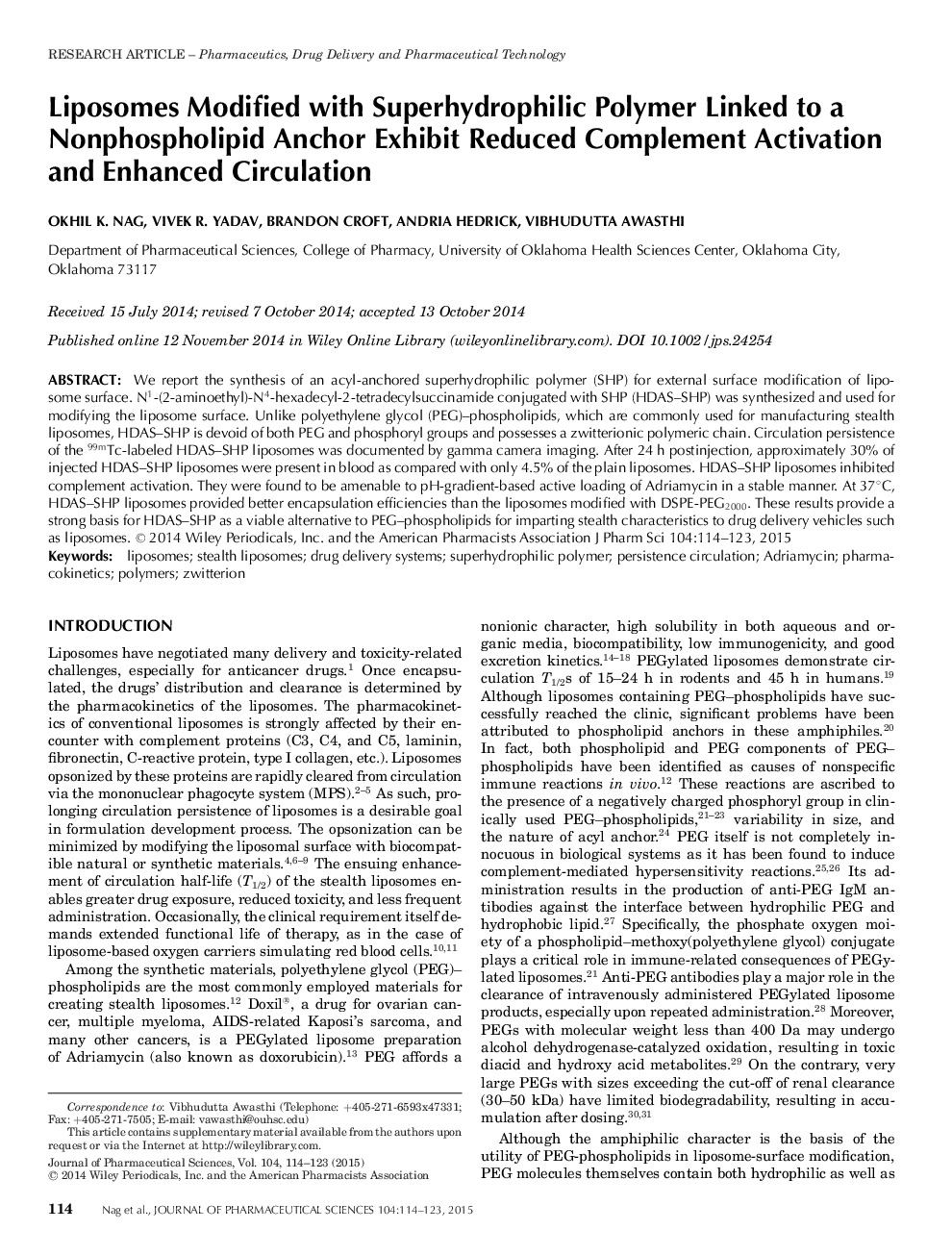| Article ID | Journal | Published Year | Pages | File Type |
|---|---|---|---|---|
| 2484628 | Journal of Pharmaceutical Sciences | 2015 | 10 Pages |
Abstract
We report the synthesis of an acyl-anchored superhydrophilic polymer (SHP) for external surface modification of liposome surface. N1-(2-aminoethyl)-N4-hexadecyl-2-tetradecylsuccinamide conjugated with SHP (HDAS-SHP) was synthesized and used for modifying the liposome surface. Unlike polyethylene glycol (PEG)-phospholipids, which are commonly used for manufacturing stealth liposomes, HDAS-SHP is devoid of both PEG and phosphoryl groups and possesses a zwitterionic polymeric chain. Circulation persistence of the 99mTc-labeled HDAS-SHP liposomes was documented by gamma camera imaging. After 24 h postinjection, approximately 30% of injected HDAS-SHP liposomes were present in blood as compared with only 4.5% of the plain liposomes. HDAS-SHP liposomes inhibited complement activation. They were found to be amenable to pH-gradient-based active loading of Adriamycin in a stable manner. At 37°C, HDAS-SHP liposomes provided better encapsulation efficiencies than the liposomes modified with DSPE-PEG2000. These results provide a strong basis for HDAS-SHP as a viable alternative to PEG-phospholipids for imparting stealth characteristics to drug delivery vehicles such as liposomes. © 2014 Wiley Periodicals, Inc. and the American Pharmacists Association J Pharm Sci 104:114-123, 2015
Keywords
Related Topics
Health Sciences
Pharmacology, Toxicology and Pharmaceutical Science
Drug Discovery
Authors
Okhil K. Nag, Vivek R. Yadav, Brandon Croft, Andria Hedrick, Vibhudutta Awasthi,
